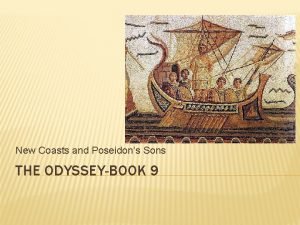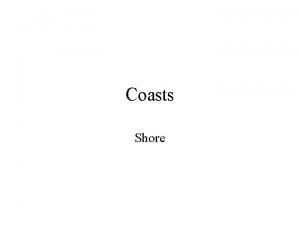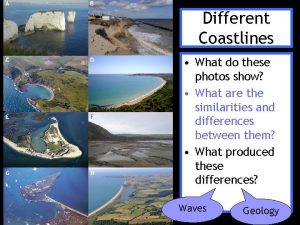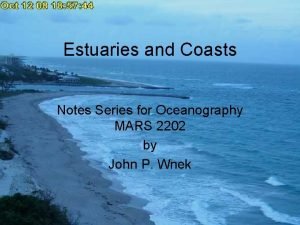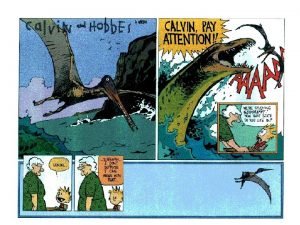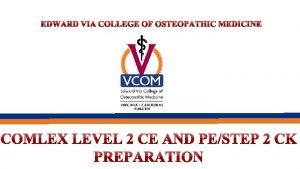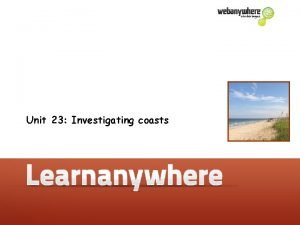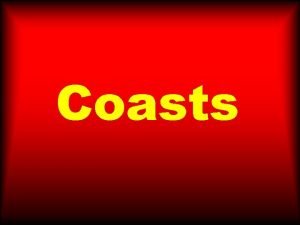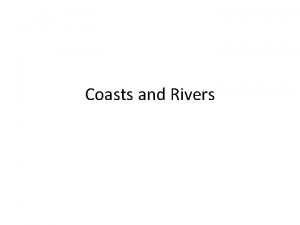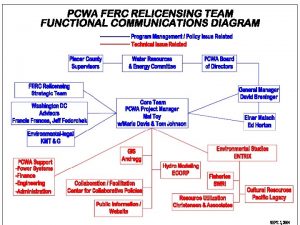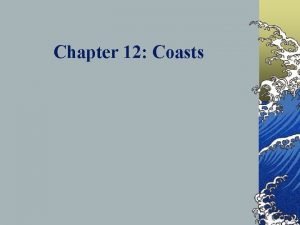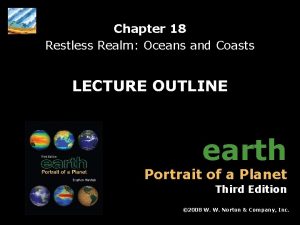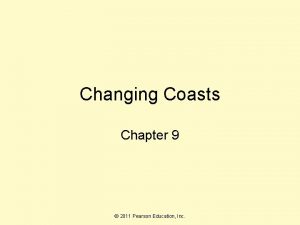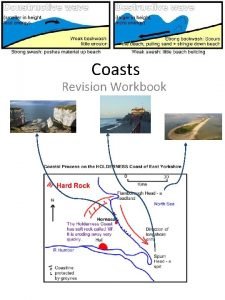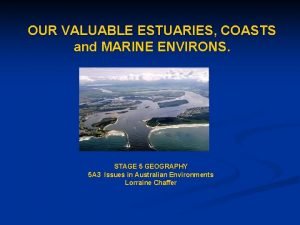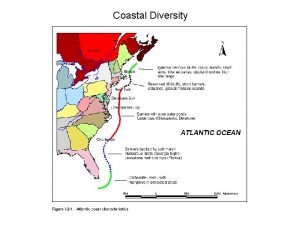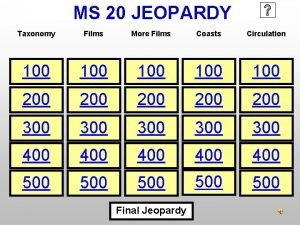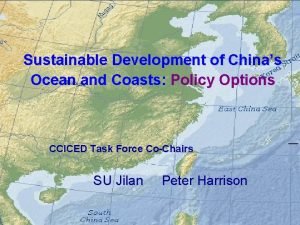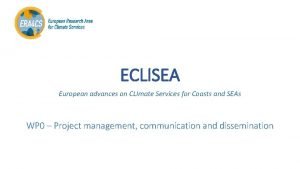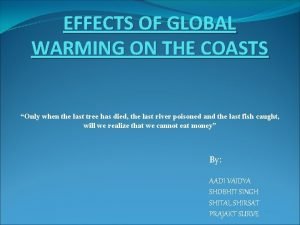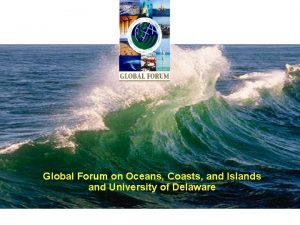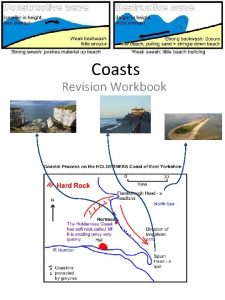Chapter 12 Coasts Chapter 12 Study Plan Coasts






















- Slides: 22

Chapter 12: Coasts

Chapter 12 Study Plan Coasts Are Shaped by Marine and Terrestrial Processes Erosional Processes Dominate Some Coasts Beaches Dominate Depositional Coasts Larger-Scale Features Accumulate on Depositional Coasts Biological Activity Forms and Modifies Coasts Fresh Water Meets the Ocean in Estuaries The Characteristics of U. S. Coasts Humans Interfere in Coastal Processes

Chapter 12 Five Main Concepts The location of a coast depends primarily on global tectonic activity and the ocean’s water volume. The shape of a coast is a product of many processes: uplift and subsidence, the wearing-down of land by erosion, and the redistribution of material by sediment transport and deposition. Coasts are classified as erosional coasts (on which erosion dominates) or depositional coasts (on which deposition dominates). Beaches change shape and volume as a function of wave energy and the balance of sediment input and removal. Human interference with coastal processes has generally accelerated the erosion of coasts near inhabited areas.

Coasts Are Shaped by Marine and Terrestrial Processes The place where ocean meets land is usually called the shore, and the term coast refers to the larger zone affected by the processes that occur at this boundary. The coast (or coastal zone) includes sandy beaches, the marshes, sand dunes, and cliffs just inland of the beach, as well as the offshore sandbars and troughs. The location of a coast depends primarily on global tectonic activity and the volume of water in the ocean. The shape of a coast is a product of many processes: uplift and subsidence, the wearing down of land by erosion, and

Coasts Are Shaped by Marine and Terrestrial Processes Five factors can cause sea level to change. Three of these factors are responsible for eustatic change, variations in global sea level: The amount of water in the world ocean can vary. The volume of the ocean’s “container” may vary. The water itself may occupy more or less volume as its temperature varies. Two other factors produce variations in local sea level: Tectonic motions and isostatic adjustment can change the height and shape of a coast. Wind and currents, seiches, storm surges, an El Niño or La Niña event,

Coasts Are Shaped by Marine and Terrestrial Processes Sea levels past and future. (a) Sea level rose rapidly at the end of the last ice age as glaciers and ice caps melted and water returned to the ocean. (b) Projections of sea level through the year 2100.

Coasts Are Shaped by Marine and Terrestrial Processes The southeastern coast of the United States, past and future. (a) The southeastern coast of the U. S. looked much different 18, 000 years ago, during the last ice age. (b) In the distant future, if the ocean were to expand the polar ice caps were to melt because of global warming, sea level could rise perhaps 60 meters (200 feet).

Coasts Are Shaped by Marine and Terrestrial Processes Because coasts are influenced by so many factors, perhaps the most useful scheme for classifying a coast is based on the predominant events that occur there: erosion and deposition. Erosional coasts are new coasts in which the dominant processes are those that remove coastal material. High-energy coasts areas frequently battered by large waves. Low-energy coasts are only infrequently attacked by large waves. Depositional coasts are steady or growing because of their rate of sediment accumulation or the action of living organisms (such as corals).

Erosional Coasts Often Have Complex Features Results of wave action on a coast. • Wave erosion of a sea cliff produces a shelf-like, wavecut platform visible at low tide. Remnants of the original cliff can protrude as sea stacks. • Sea stacks at Port Campbell National Park, Australia.

Shorelines Can Be Straightened by Selective Erosion Wave energy converges on headlands and diverges in the adjoining bays. The accumulation of sediment derived from the headland in the tranquil bays eventually smoothes the contours of the shore.

Beaches Dominate Depositional Coasts A beach is a zone of loose particles that covers a shore. Beaches result when sediment, usually sand, is transported to places suitable for deposition. Common features of a beach • Berm crest • Backshore • Foreshore • Beach scarp • Longshore trough • Longshore bars

Waves Transport Sediment on Beaches Most temperate-climate beaches undergo a seasonal transformation. As seasons change, sand moves on and off Boomer Beach near La Jolla, California. Gentle summer waves move sand onshore (TOP RIGHT), but larger winter waves remove the sand to offshore bars, exposing the basement rock (BOTTOM RIGHT).

Waves Transport Sediment on Beaches If sediments have accumulated to form a beach, water from the breaking wave will rush up the beach at a slight angle but return to the ocean by running straight downhill under the influence of gravity. This creates a longshore current. – (TOP LEFT) A longshore current moves sediment along the shoreline between the surf zone and the upper limit of wave action. – (BOTTOM LEFT) Groins built at right angles to the shore to slow the migration of sand.

Sand Input and Outflow Are Balanced in Coastal Cells Coastal sediment transport cells. (TOP LEFT) The general features of coastal cells. Sand is introduced by rivers, transported southward by the longshore drift, and trapped within the nearshore heads of submarine canyons. (TOP RIGHT) Example of a sand budget. Sections of coast in which sand input and sand output are balanced are referred to as coastal cells.

Large-Scale Features Accumulate on Depositional Coasts (ABOVE) A composite diagram of the large-scale features of an imaginary depositional coast. Not all these features would be found in such close proximity on a real coast. • A sand spit forms where the longshore current slows as it clears a headland approaches a quiet bay. • A bay mouth bar forms when a sand spit closes off a bay by attaching to a headland adjacent to the bay. • Depositional coasts can also develop narrow, exposed sandbars that are parallel to but separated from land - known as barrier islands.

Biological Activity Forms And Modifies Coasts The development of an atoll. A fringing reef forms around an island in the tropics. The island sinks as the oceanic plate on which it rides moves away from a spreading center. In some cases, coral organisms build upward fast enough to form a barrier reef. The island eventually disappears beneath the surface, but the coral remains at the surface as an atoll.

Estuaries Are Classified by Their Origins An estuary is a body of water in which fresh river water mixes with ocean water. Estuaries can be classified by their origin: (a) (b) (c) (d) Drowned river mouths Fjords Bar-built Tectonic

Estuary Characteristics Are Influenced by Water Density and Flow Types of estuaries in vertical cross sections. The salinity values show the amount of mixing between fresh water and seawater in the various types. (a) Salt wedge estuary. (b) Well-mixed estuary. (c) Partially mixed estuary. (d) Fjord estuary.

Characteristics of U. S. Coasts • The Pacific Coast - An actively rising margin where indications of recent tectonic activity can be observed. • The Atlantic Coast - A passive margin on the trailing position of the North American plate. • The Gulf Coast - Smaller wave size and a smaller tidal range characterize the Gulf Coast.

Humans Interfere in Coastal Processes Various methods that humans use to try to influence coastal processes • Breakwaters: Growth of a beach protected by a breakwater in Santa Monica, California. – (TOP LEFT) Shoreline in 1931. – (MIDDLE LEFT) The same shoreline in 1949 after the breakwater was built. – (BOTTOM LEFT)The breakwater has deteriorated and can now be overtopped by waves. This 2007 • Groins (NEXT SLIDE) • Seawalls (NEXT SLIDE) • Importing sand (NEXT SLIDE)

Humans Interfere in Coastal Processes In many cases these methods help serve as a reminder that shorelines and beaches are constantly changing, and are not under human control.

Humans Have Interfered in Coastal Processes The extensively modified coast of the Emirate of Dubai.
 Poseidons son
Poseidons son Submergent coast
Submergent coast Secondary coasts
Secondary coasts Www hoddereducation com
Www hoddereducation com Difference between concordant and discordant coastlines
Difference between concordant and discordant coastlines Estuaries and coasts
Estuaries and coasts Ecological study vs cohort study
Ecological study vs cohort study Retrospective cohort study vs prospective cohort study
Retrospective cohort study vs prospective cohort study Method study in management
Method study in management Marty lobdel
Marty lobdel Phytogeographical regions of world
Phytogeographical regions of world Distinguish between motion study and time study
Distinguish between motion study and time study Differentiate between time study and motion study
Differentiate between time study and motion study Study plan sample
Study plan sample Esa method
Esa method Ung core plan of study
Ung core plan of study Writing a study plan
Writing a study plan Comlex level 3 question bank
Comlex level 3 question bank Plan do study act
Plan do study act Agreeing and disagreeing ppp lesson plan
Agreeing and disagreeing ppp lesson plan Study plan for scholarship
Study plan for scholarship Monash study away
Monash study away Study plan
Study plan
